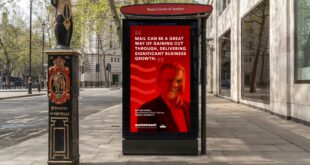We erect statues to venerate, celebrate or commemorate events and people. We remember together and that is one of the reasons why we choose specific commemorative dates alongside statues. These statues are ‘sites of memory’. We walk past most of them in our daily commutes or on our way to mundane activities. Some of these statues have become an integral part of our history, even when we do not remember who erected them or why. In recent years, removing them has created a sense of anxiety that echoes the fear of losing one’s space in society or one’s place in history. Fear of erasure of our story and, by extension, our connection to a celebrated past are only some of the reasons that have led to resisting the removal of these memorabilia.
Removing statues has made the headlines in recent years, with controversies around colonial figures, from Cecil Rhodes and Confederate heroes to slave traders. At the same time, there has been renewed interest in ways to bring minority ethnic figures into the public realm. Britain’s urban landscape is populated with a relatively low number of men and women of colour, who nonetheless contributed to the nation’s history in various ways. In the last 20 years, there have been about 20 or so statues of Black people in Britain. Discussions about erecting those memorials took several decades in most cases.
British Rail commissioned three bronze figures of Black commuters for Brixton Station in 1986. In 2016, the statues were given listed status. The pieces opened the door to two other statue representing anonymous Black Britons. From the homage paid to African Caribbean communities in the form of a statue of a Black woman holding a baby, located in Stockwell Gardens (2008), to ‘Reaching Out’, the statue of a Black ‘everywoman’ unveiled in August 2020 and now located on Three Mills Green in East London, the representation of ordinary Black Britons shines a particular light on the country’s support to those who are part of the nation’s fabric.
Britain also celebrates Black heroes in the public realm. In 2016, the statue of nurse Mary Seacole, who helped Crimean War soldiers, proudly stood for the first time before St Thomas’ Hospital in London. Up to that point, there were no statues of renowned Black women in Britain. Three years later, a sculpture of three leading football legends, Brendon Batson, Laurie Cunningham and Cyrille Regis, was unveiled in West Bromwich town centre.
There have been several other Black figures represented in the British urban landscape, and one of the least known and yet most outstanding characters has been Walter Tull. Born in Kent in 1888 to a Folkestone mother and Barbadian father, young Walter was sent to an orphanage with his siblings when he lost his parents. Playing football was Tull’s saving grace. He became a professional football player at the age of 21. When the First World War broke out in 1914, he enlisted and bravely fought for the country, later being promoted to officer (the first Black officer to command white troops). He was tragically killed towards the end of the war in 1918. Although his name appears on a war memorial unveiled in 1921, no further recognition followed. It took several decades, but Walter Tull was eventually recognised as both a war hero and a great football player. His name has been engraved in memorial walls since 1999. In 2017, an installation representing Tull was unveiled in Northampton Guildhall. The following year, to mark the centenary of the end of World War I, Royal Mail produced a stamp representing Walter.
British people of African descent – heroes, leaders and ordinary but valued members of British society – continue to be remembered every year during and outside of Black History Month. Their histories and experiences are British and European stories. These people belong to several worlds. They are British, Caribbean and African Europeans.
African Europeans is out now, published by Hurst
Now read
Shaznay Lewis celebrates 11 Black British trailblazers
For the AW20 issue of GQ Style, the Black Square is our cover star
Welcome to GQ Style’s 15th Anniversary Issue: ‘Liberation’
Source link



